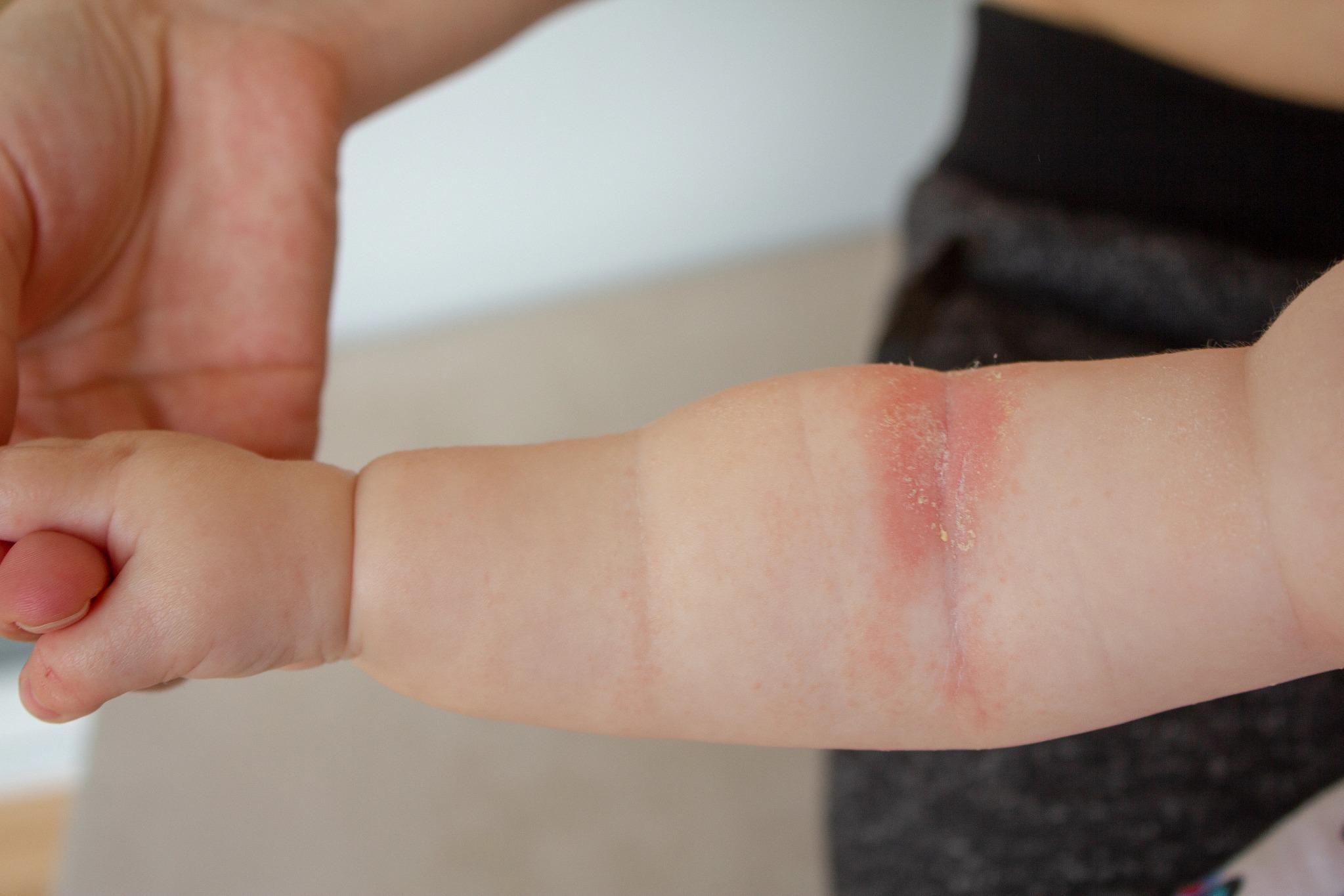Nipple Vasospasm- What is it, and what can you do about it?
Maurice Raynaud first described vasospasm of the arterioles in 1862. It causes an intermittent restriction of blood flow, which is often seen as blanching or paleness. When the reflex dilation of the blood vessels occurs, a colour change to purple or red is often noted, and accompanied by a burning or throbbing pain (1)
Raynaud’s phenomenon has been associated with other medical conditions, such as rheumatologic diseases (systemic lupus erythematosus, rheumatoid arthritis, Ehlers Danlos syndrome, joint hypermobility); endocrine diseases such as hypothyroidism, and previous breast surgery (1).
Women often feel surprised and confused at the intensity and duration of the pain they experience while breastfeeding, with terms such as “extremely, excruciatingly painful” and “horrific” used to describe this (2).
The CASTLE study investigated nipple pain and damage in first time mothers prospectively.
Of the 336 women in the study, 58%, or 198 women experienced nipple damage in the first week of breastfeeding, and 23%, or 73 women reported vasospasm (2).
Symptoms
-painful breastfeeding: sensations have been described as numb, throbbing or burning (1). One side often feels worse than the other.
-precipitation by cold stimulus: pain may worsen with exposure to cold, for example, stepping out of a hot shower, moving from a warm indoors environment to outside, breastfeeding overnight when the temperature is often cooler, opening the fridge/freezer door, or when milk let-down occurs (1).
-biphasic or triphasic colour changes of the nipple: you may notice that the nipple colour blanches (white), and changes in colour to red or purple (1).
Because the pain of breastfeeding is so severe, it is often mistaken for Candida albicans infection, with unnecessary oral and topical antifungal medications being prescribed (1, 3).
My own experience of vasospasm
Baby number 1
My first birth was an emergency caesarean, and I remember a midwife latching my baby on. The very first feed was painful, despite the latch looking ‘perfect’ (side note- if you’re told your baby is latched on ‘perfectly’ but it feels uncomfortable, pop a pinky finger in to break the seal, and try reattaching).
Breastfeeding was excruciatingly painful. We left the hospital with me only able to feed using nipple shields, and my bub on formula top ups due to low weight gain.
Baby number 2
With baby number 2, I had a vaginal birth and was able to practice baby led attachment. Still, the very first feed was painful, and from there significant cracks developed, and eventually great chunks of my nipples were missing.
I needed to exclusively express for weeks to allow the damage to heal; and during this time worked with an IBCLC. She explained that the damage takes longer to heal when you have nipple vasospasm, because the blood flow to the nipple is impaired, and with that comes less nutrients to repair the damage.
We focused on optimising positioning and attachment. I needed to count how long a let down lasted so I had a focal point. I would often phone friends when I needed to latch my baby on- the pain was just so excruciating, I needed my mind to be anywhere but in that room.
Because of the pain, I tried to space out feeds which ultimately impacted my milk supply and resulted in a failure to thrive diagnosis.
I tried using the calcium, magnesium and fish oil that my IBCLC recommended. It didn’t seem to help. I now know that the brands that I was recommended were not optimal forms of calcium and magnesium, which may have contributed to this.
I ended up visiting my GP and obtaining a script for Nifedipine, which I used for approximately 6 weeks, and then weaned off. It worked within the first week to reduce the pain I was experiencing and was a godsend.
Baby number 3
I planned for nipple vasospasm this time! I took fish oil throughout my pregnancy.
At birth, the first breastfeed was again painful (despite practicing baby led attachment- so unfair!).
My baby was diagnosed with tongue and lip ties, which were lasered at 9 days of age.
Breastfeeds were more painful at night, so I did my best to have warm compresses, a heated room, and blankets. I wore Breast Warmers and took a herbal mixture, and started supplementing with calcium and magnesium.
At around the 6 week mark, we had our first breastfeed that wasn’t painful. Hallelujah! I then slowly weaned off the herb mix and supplements, and was happy to find no further pain.
What can you do?
-Prevent or decrease your exposure to the cold.
- You may find it helpful in colder months to have a heater in your bathroom, to minimise any temperature changes after a shower.
- Be conscious of moving from indoors to outdoors. Keep an extra top/jumper handy and pop this on before heading out the door.
- Some mothers find Breast Warmers helpful. Back when I was breastfeeding, there used to be ‘shells’ with Flectalon, which is a body heat reflecting material, helping to minimise local temperature changes at the breast. You can now buy the newer version of these Breast Warmers, which are made from 2 layers of merino wool.
-Be mindful at breastfeeding times
- Take a deep breath before feeding. Roll your shoulders down and away from your ears. The anticipation of pain can have you sitting all hunched up.
- Pain can occur with a let-down. Try using a warm compress before a feed. If you don’t have someone to organise compresses for you, try filling a thermos with comfortably hot water (careful not to spill it on special people!) and placing this next to a bowl, and a stack of clean face washers.
- At feed time, you can put your washer in the bowl, pour the hot water on to it, and wring it out in the bowl. Voila, warm compress, with no mess and a minimum of effort.
- Ensure a good latch
- Some mothers find it helpful to count how long the pain lasts, and keep this in mind for subsequent feeds.
- For example, the pain may last for a count of 10 on the left breast, and 20 on the right breast. This gives a point to focus on. You might choose to count and use deep breathing techniques; or phone a friend for a distraction.
-Avoid drugs/nicotine that can precipitate symptoms
- Women with nipple vasospasm should avoid vasoconstricting drugs, including CAFFEINE (sorry!). Nicotine can decrease blood flow by up to 40% when only two cigarettes are smoked (1).
-Talk to your GP about pharmaceutical options
- Some women find nifedipine, a calcium channel blocker that acts as a vasodilator, is an effective option for reducing pain. A very small amount passes into breastmilk, and it is considered safe for use by breastfeeding mothers (1).
-Herbal medicines and nutritional supplements
- Circulatory stimulants such as prickly ash, ginkgo, ginger, cayenne help to improve overall circulation, and may reduce the pain associated with vasospasm. A naturopath skilled in breastfeeding support can dispense an appropriate herbal mix for this purpose.
- Calcium, magnesium, and fish oil may be helpful (1, 3). Please speak to a qualified naturopath or nutritionist about the most appropriate forms to take. There are many poor quality products available over the counter, including poorly absorbed forms of calcium and magnesium in particular. If a consultation is outside your financial means, try a health food store and ask to speak with a qualified naturopath or nutritionist on the shop floor, who can advise on the best products.
-Seek skilled support
- There are many reasons why breastfeeding can be painful, including, but not limited to poor latch, tongue and/or lip ties, nipple vasospasm and nipple thrush/Candida infection (3).
- Have a consultation with your local IBCLC (International Board Certified Lactation Consultant); or head along to your local breastfeeding support group to troubleshoot what is happening for you individually- in Australia, this is the Australian Breastfeeding Association. You can also contact the 24 hour National Breastfeeding Helpline on 1800 686 268.
- Pain increases the risk of experiencing depression or anxiety. While you work on resolving the cause of your pain, please seek out support with your GP, maternal child health nurse, counsellor or psychologist.
References
- Anderson JE, Held N, Wright K. Raynaud’s Phenomenon of the Nipple: A Treatable Cause of Painful Breastfeeding. Pediatrics. 2004;113(4):e360-e4.
- Buck ML, Amir LH, Cullinane M, Donath SM, Team CS. Nipple pain, damage, and vasospasm in the first 8 weeks postpartum. Breastfeed Med. 2014;9(2):56-62.
- Wu M, Chason R, Wong M. Raynaud’s Phenomenon of the Nipple. Obstetrics & Gynecology. 2012;119:447-9.







